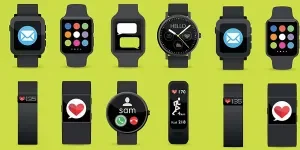When it comes to spatial computing devices or AR glasses, the first thing that may come to mind for many people is the Apple Vision Pro.
As a product hailed by Apple as the “next-generation mobile computing terminal”, it indeed garnered quite a bit of a “halo effect” when it first launched. But after the halo faded, the Vision Pro faced a wave of “returns.” Not because the “future” it painted wasn’t grand enough, but after the enthusiasm wore off, consumers realized that its short battery life and discomfort during long-term wear made spending $3499 on this device that has a low usage ratio in daily life “not worth it”.
Only a pair of lightweight, unrestricted, and reasonably priced smart glasses can be accepted by more consumers, allowing more people to quickly step into this new scenario of “spatial computing”.
Now there are many smart glasses, such as Bose, Huawei, Mate, and FFALCON. Although they can’t compare to Apple Vision Pro in terms of functionality, they all have one functional feature, which is that at least in terms of wearing experience, they are more inclined to be ordinary “glasses”. XREAL is the same.
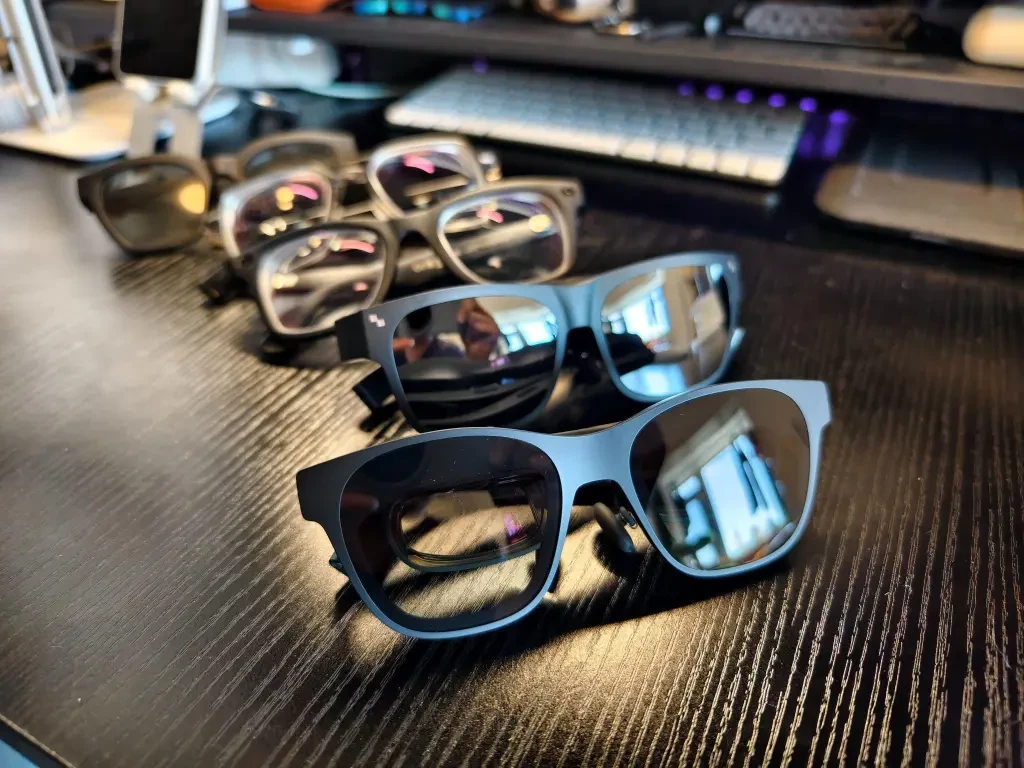
Unwilling to wait for developers, XREAL chooses to “do it themselves”
As a representative of split-type smart AR glasses, XREAL brought users the XREAL Air 2 Pro AR glasses with electrochromic material in the second half of last year. Its biggest feature is its wearing comfort, with a weight of only 72g and a “zero-pressure air cushion nose pad” making it possible to wear this device for a long time.
However, when I recommended this product to many friends last year, they all asked me a very “fatal” question: “Apart from connecting to a phone to watch movies and serving as a large display, what else can it do?”
To solve this problem, XREAL launched the screen mirroring box Beam in June 2023 to expand the usage scenarios of AR glasses. And this year, XREAL has taken an even more aggressive route, directly releasing a “smartphone” – XREAL Beam Pro.
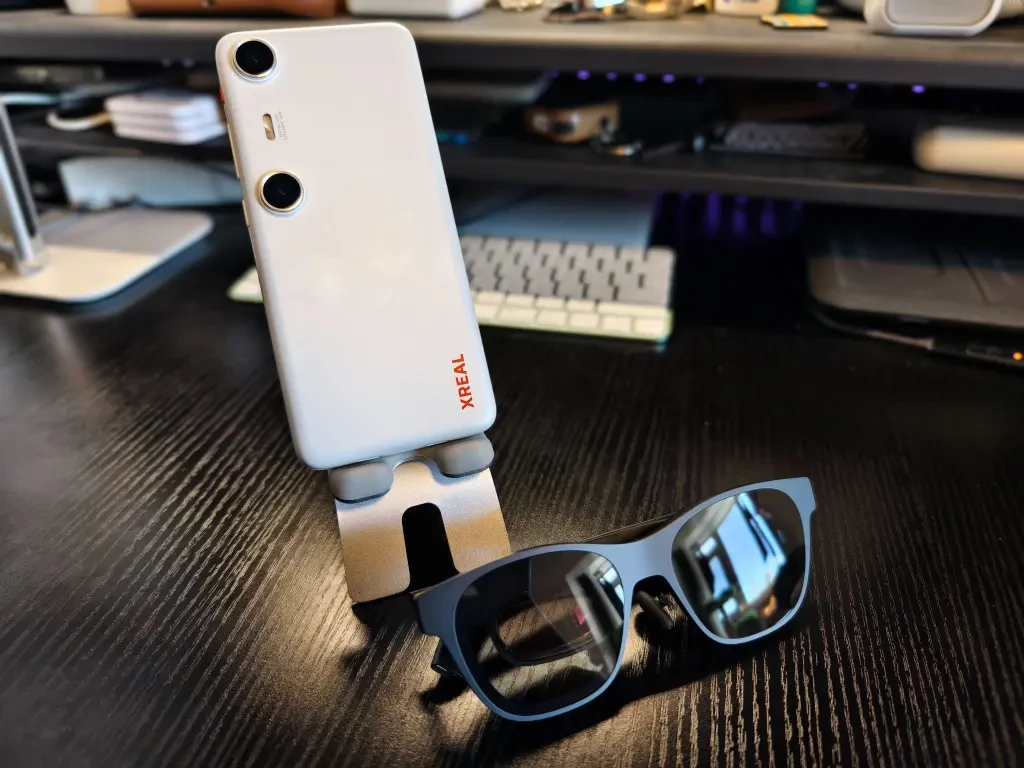
The reason for the quotation marks is that although this product looks like a phone, it cannot make calls. It has a 6.5-inch 90Hz LCD screen, is equipped with a Qualcomm Snapdragon Spaces Compute Platform, runs the Nebula OS system based on Android 14, has two built-in Samsung JN1 lenses dedicated to capturing spatial video and spatial audio, and supports up to 1TB storage card expansion.
Rather than calling it a “smartphone”, it may be more appropriate to call it an Android version of the iPod Touch.
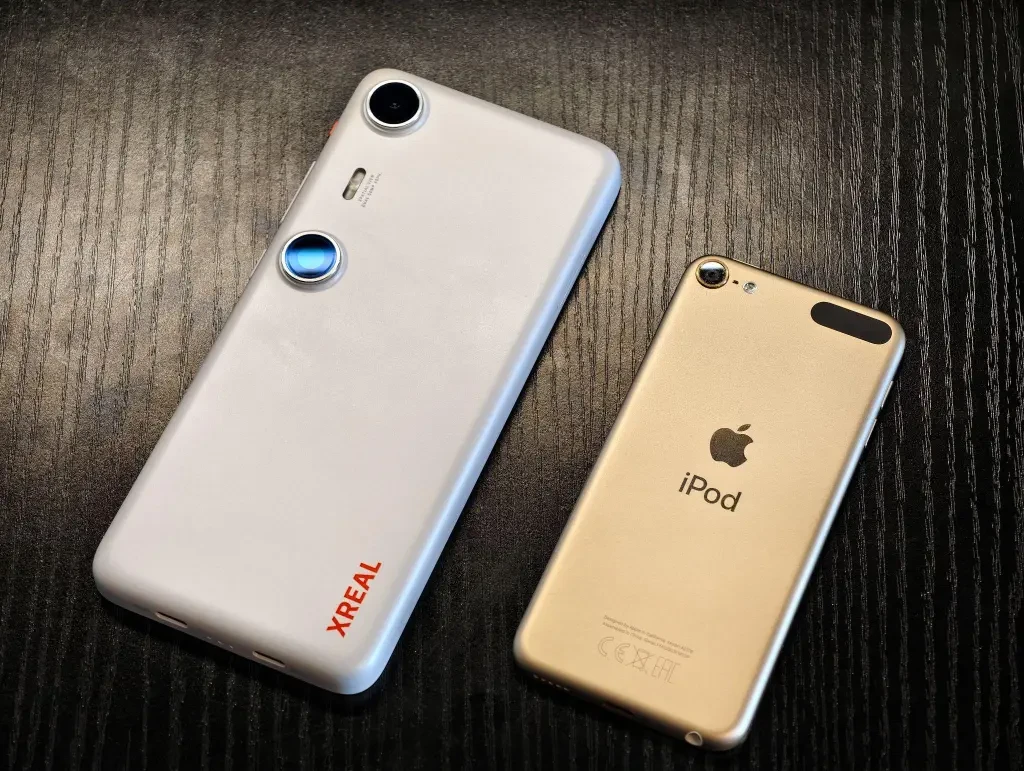
The three core selling points of the Beam Pro are: the “central hub” for driving AR glasses, the “medium” for streaming living room entertainment devices, and the “terminal” that integrates capture and display of spatial imagery.
As someone who frequently travels for business and often watches dramas on the go, what attracts me most about XREAL Beam Pro is that it can allow almost all Android applications to directly enter the era of “spatial computing”.
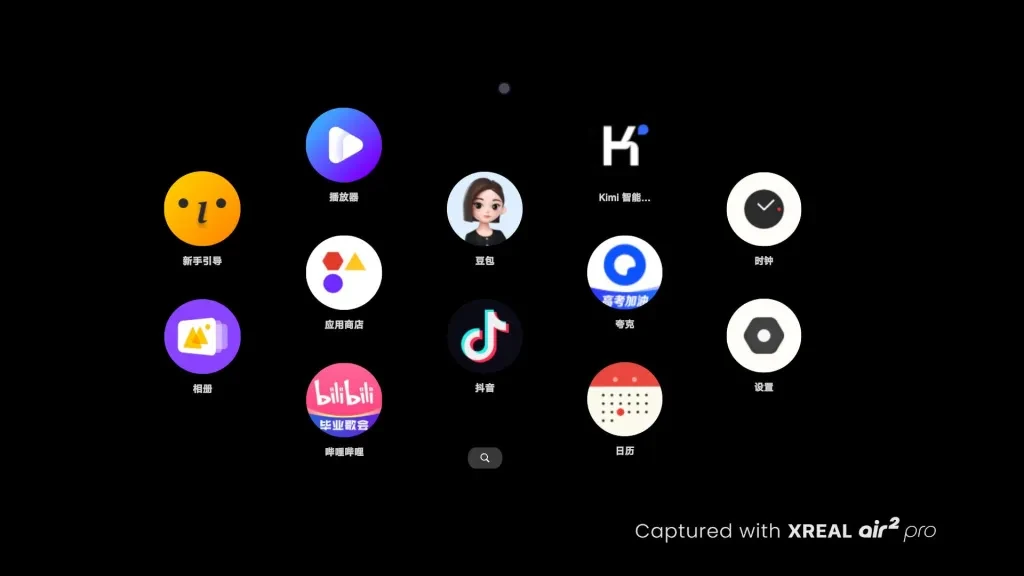
This is actually a very “circuitous” method. Because for the general consumer, AR devices are still in their infancy. The reason why many early VR glasses were not accepted by a wide range of users and did not usher in explosive sales is that the entire field lacks a “killer application”.
With few developers in the early stage and even fewer users buying the product, it’s difficult to mobilize the enthusiasm of developers when the user base doesn’t grow, which over time turns the entire VR device into a carnival for niche users.
XREAL, on the other hand, takes a different approach, choosing to 3D-ize 2D apps in the Android ecosystem and forcibly “move” existing mobile apps into the AR ecosystem through Nebula OS.
There are two Type-C interfaces at the bottom of the Beam Pro, with the left interface for power supply and the right interface dedicated to connecting XREAL’s AR glasses.
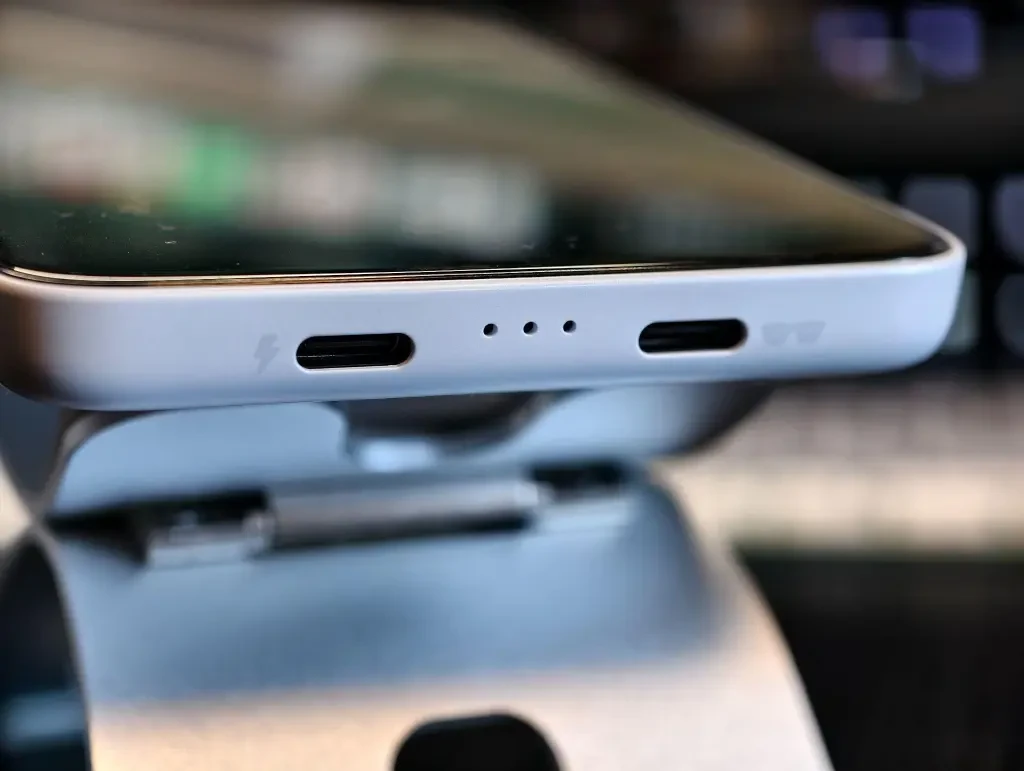
After connecting the XREAL Air 2 Pro to the Beam Pro, the spatial interface of XREAL Nebula OS can be activated. In this interface, all applications will be presented to the user in the form of a giant screen, and each application can be directly “suspended” in front of the user without secondary adaptation by developers.
This suspended screen has a refresh rate of 90Hz, so even if you frequently turn your head during use, there will be no blurring or flickering, greatly extending the usage duration of this giant screen.
You can hang an AI on the right side of the screen to chat with you, and then hang a video app in the center of the screen for entertainment (note: it supports up to two apps running on the same screen at the same time). This kind of operation that previously required the coordination of multiple monitors or a curved screen can now be achieved with just a small Beam Pro and a pair of AR glasses.

<Image description: A user interacting with the floating AR interface using the Beam Pro device.>
And because this screen is a 3DoF floating spatial screen, you can use the red button on the side of the Beam Pro to choose whether it follows the user’s head movements.

When watching a movie while lying in bed, you can set the screen to always be in front of you following your head, while in the office, you can set it to enter a multi-screen collaboration state, switching between different screens with the movement of your head to complete different operations.
It’s worth noting that since the apps running on the Beam Pro are essentially mobile apps, unlike other manufacturers’ AR boxes that can only run TV apps, you don’t need to separately purchase a big screen membership for the TV side when watching movies and TV shows in video apps, which also saves users a lot of money invisibly.
In terms of operation, once the Beam Pro is connected to XREAL glasses, it can transform into a remote control that supports air tap. This “point and click” control method is easier to learn, and while having high accuracy, it also eliminates the need for the AR glasses side to be equipped with additional sensors to recognize user behavior, which is more in line with the user’s operating intuition.
Promoting spatial imagery, can’t rely on phone manufacturers
In addition to the selling point of being the “central hub” for driving AR glasses, another major function of the Beam Pro is capturing spatial imagery.
On Vision Pro, Apple introduced the concept of spatial imagery and spatial video to users for the first time, but for most people, what spatial video and spatial photos actually look like is still very unfamiliar. To start watching spatial imagery, you need to begin with a Vision Pro that costs $3499. I think even if the effect is stunning, this price will still “discourage” most people.
With the XREAL Air 2 Pro + Beam Pro combo, you only need one-seventh of the price to experience the feeling of spatial imagery.
The Beam Pro is equipped with two Samsung JN1 lenses with exactly the same parameters, and the spacing between the two lenses is 50mm to simulate the interpupillary distance of human eyes, so that it can shoot a more stereoscopic effect closer to what the human eye sees.

Currently, spatial video supports up to 1080P 60fps, which is completely sufficient for daily recording. Since neither animated images nor videos can let you in front of the screen experience the effect of spatial video, I can only describe my feelings here, which is: a dream.
When reviewing the recorded spatial video on XREAL Air 2 Pro, you will see the feeling often described in movies when portraying dreams. The surroundings of the picture are surrounded by a piece of black, and in the center is a pure 3D video image. It’s as if you are observing a real scene through a “telescope”. That kind of experience cannot be replaced by any 2D picture, no matter how high-definition.

But unfortunately, currently apart from Beam Pro, Vision Pro, and iPhone 15 Pro series, there are no other devices that support capturing spatial video, and there is also no platform on the market that supports sharing spatial video.
The biggest significance of spatial video is to allow people to “be personally on the scene” and return to the shooting site at that time. If XREAL can make a community-like app in the future for users to upload and share the spatial videos they shoot, it will be even more meaningful.
Besides, the Beam Pro is a smartphone that can’t make calls or send messages. If you don’t need calling and texting, you can also use it as a backup phone to play games and watch videos.
In terms of price, the Beam Pro comes in 3 versions: the 6GB+128GB WiFi version is priced at 1299 yuan (About $180) , the 8GB+256GB WiFi version is priced at 1599 yuan (About $222) , and the 5G version is priced at 1999 yuan (About $277) . For the vast majority of users, the 1299 yuan (About $180) version is already completely sufficient for your usage needs. But if you love watching streaming videos and aren’t often in a Wi-Fi environment, the 5G version is also a good choice.
In summary
XREAL launched the Beam Pro on one hand to bring users the best spatial computing experience, and on the other hand, out of “disappointment” with phone manufacturers.
Nowadays, phone manufacturers and AR manufacturers have inherently different product priorities. The former prioritizes all feature development for phones, with AR being only an auxiliary function. It is unrealistic to expect phone manufacturers to invest too much R&D effort into this “niche” feature.
For example: Although the iPhone 15 Pro series can also shoot spatial video, the iPhone’s lens module prioritizes traditional imaging, so the computational effect of multi-camera collaboration internally takes higher priority than spatial video. This prevents Apple from forcibly changing the spacing of the rear lens module for the sake of spatial video shooting effects.
And currently, the spacing between the ultra-wide-angle and main camera on the iPhone used for spatial video shooting is too close, with a large difference from the human eye interpupillary distance. So the spatial video effect it shoots is not as good as Vision Pro or Beam Pro.
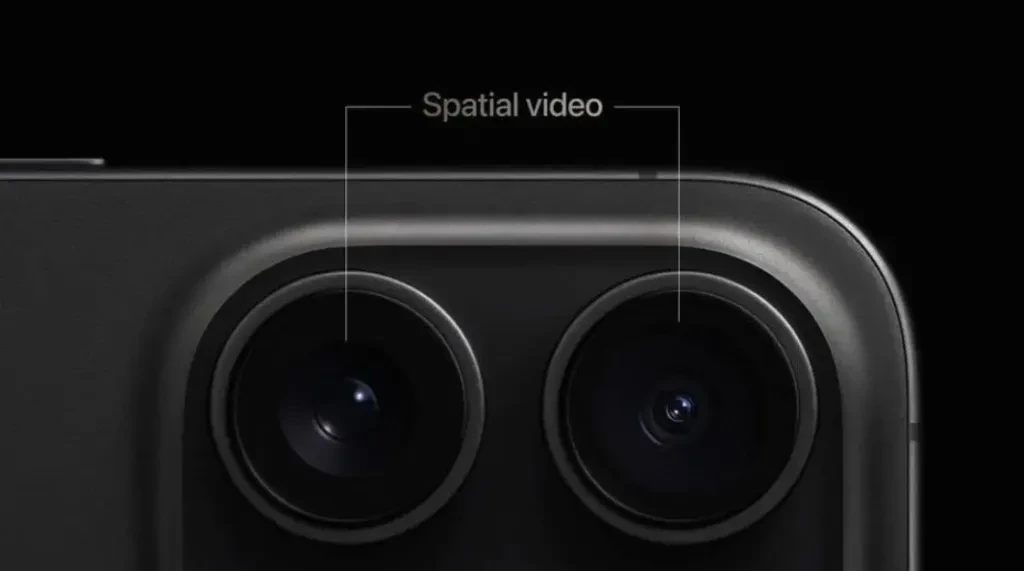
AR manufacturers’ all R&D serves AR. Only by having their own hardware carrier can they develop more meaningful functions without being “restricted by others”.
The Beam Pro can not only provide external computing power for XREAL’s smart glasses but also allow users to experience a whole new audio-visual format at a relatively low cost.
Although the starting price of 1299 yuan (About $180) is higher than the previous Beam’s 799 yuan (About $110) pricing, it brings a control method that is more in line with user intuition and richer app ecosystem resources, which is still very cost-effective for users.
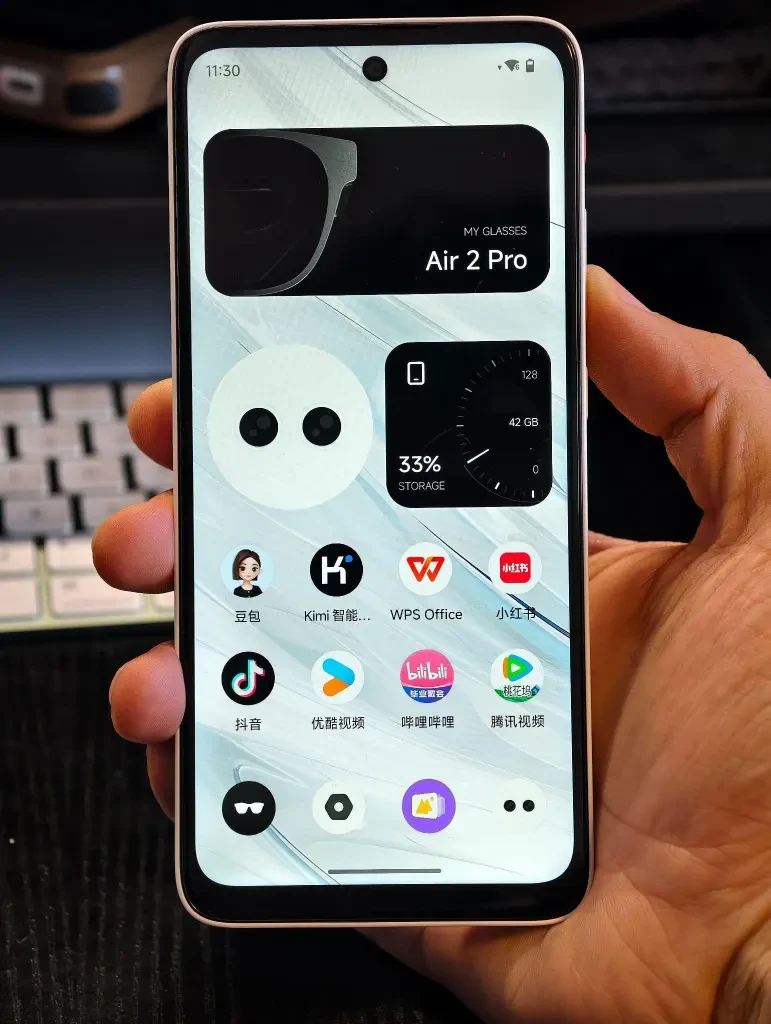
If you think XREAL Beam Pro is a smartphone, you may turn your nose up at its configuration. But if you position it as an upgraded version of Beam, everything makes sense.
Don’t think it’s a bad move for AR glasses manufacturers to make phones. It just happens to be designed in a phone-like form in this era, with the purpose of making it easier for most users to operate. That’s all.
Source from PingWest
Disclaimer: The information set forth above is provided by PingWest.com, independently of Alibaba.com. Alibaba.com makes no representation and warranties as to the quality and reliability of the seller and products. Alibaba.com expressly disclaims any liability for breaches pertaining to the copyright of content.
